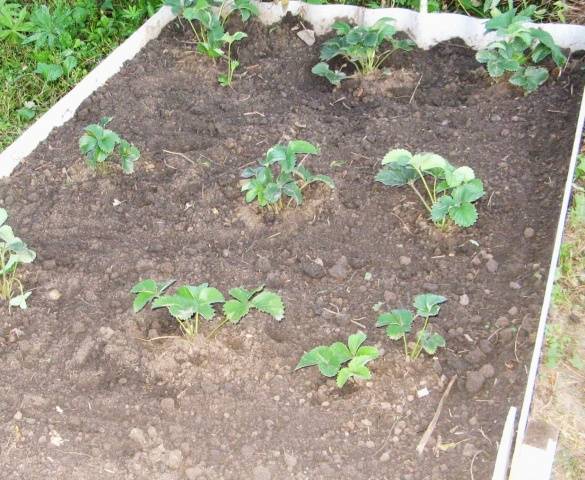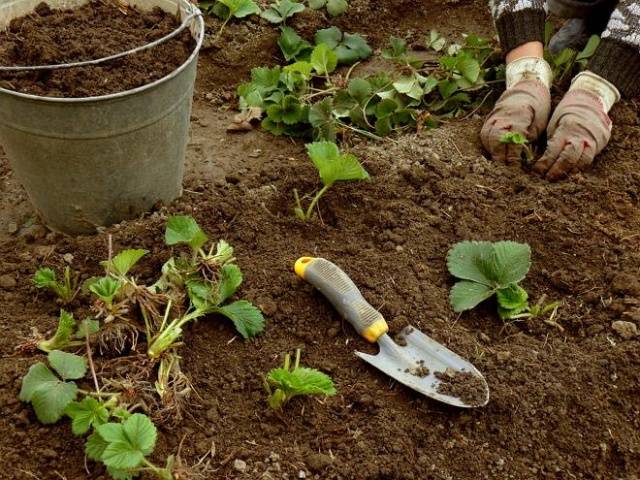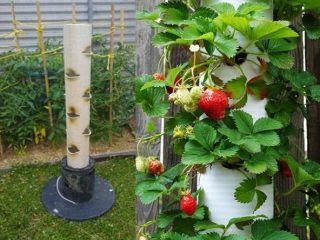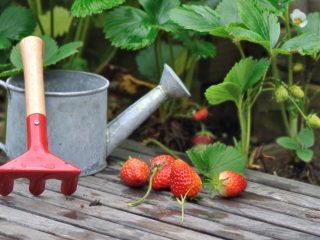Content
Strawberries are a tasty, healthy and very beautiful berry. This is a real storehouse of vitamins and microelements, and if you consider that only honeysuckle ripens before, its importance in the diet of a person weakened by winter vitamin deficiency cannot be overestimated. They eat strawberries fresh and frozen, make jams, compotes from them, prepare marshmallows and juices. In recent years, varieties have been developed that are suitable for growing on a windowsill in winter, bearing fruit in the fall, and also pleasing to the eye with pink, red and crimson flowers.
The berry most often grown on an industrial scale is strawberries. It is planted in greenhouses and strawberry fields and more than 4 million tons of berries are harvested annually. Today there are more than 2,500 varieties, their number is growing every year. Summer residents also paid attention to strawberries. Growing it is troublesome, it requires knowledge of agricultural technology and hard work, but there is nothing tastier than aromatic sweet berries picked from your own garden bed. Today we will tell you how to properly plant strawberries in the fall.
Strawberries or wild strawberries
Strictly speaking, the berry that we call strawberry is a large-fruited strawberry.Strawberry is a dioecious plant; it has female plants, which bear fruit after flowering, and male plants, which produce only flowers. Its berries are small, only slightly larger than wild strawberries, never fully colored, but very sweet and aromatic.
Large-fruited (garden) strawberries arose about 300 years ago in France from the accidental cross-pollination of Chilean and Virginia strawberries. Suddenly, a rather large berry grew from the planted seeds. Its large-fruited nature was genetically fixed, and the accidental hybrid subsequently became the progenitor of all varieties of cultivated strawberries.
The berry came to Russia from England, at first it was called “Victoria”, then the name “strawberry” became widespread, as it is known today. We will also call garden (also called cultivated or pineapple) strawberries strawberries so as not to cause confusion.
What you need to know when buying seedlings
There are many varieties of strawberries. Inexperienced owners are tempted by colorful advertisements or reviews from relatives living in other areas, and plant berries that are not intended for cultivation in their region. Naturally, they do not get a good harvest.
Another danger when buying planting material is weed varieties that are passed off as elite. Zhmurka does not produce berries at all, Dubnyak does not even bloom, Bakhmutka or Suspension will delight you with a meager harvest of small fruits.
Unscrupulous traders, who did not have time to sell their products on time, dip strawberry roots in boiling water, which makes the leaves (as well as flowers and fruits on remontant varieties) seem fresh. Naturally, such seedlings will not take root.
It is best to buy berry seedlings from large garden centers or from well-known manufacturers. Of course, they cost more than on the market, but by propagating the variety, you can exchange with neighbors or friends.
When is the best time to plant strawberries?
It is difficult to definitively answer the question of when is the best time to plant strawberries; we have a large country and different climatic conditions. Let's look at this issue in detail.
Strawberry planting dates
The berries are planted in spring or autumn. Typically, plantings carried out at the end of summer are also called autumn plantings. For the Middle Zone, the optimal time in spring is considered to be mid-April - mid-May, and in autumn - the period from August to mid-September. In the southern regions, if the weather is favorable, strawberries can be planted as early as March, but their rooting is sometimes completed in early November. In the North-West, spring plantings work best - this gives the berries more time to adapt and take root.
But these dates are very arbitrary, everything depends on the weather. You cannot plant strawberries:
- in the spring, until the snow melts and the soil warms up a little;
- in the summer, if hot days are expected ahead (in the southern regions, in general, there is no talk of summer planting);
- in the fall, just before frost.
Planting in spring
The main thing is not to rush or rush into planting strawberries in the spring. The best time for planting is the beginning of field work, when the soil is well supplied with moisture accumulated in the winter-spring period. Being late is fraught with the death of a large part of the plants, even with sufficient watering. But for the northern regions, spring is the best time to plant this berry.
Of course, this does not apply to planting material sold in containers.
Planting in autumn
Planting strawberries in the fall will allow you to get a good harvest of berries next year. This is the best time for seedlings to root for most regions. There are:
- early autumn planting - from August to mid-September;
- mid-autumn - from mid-September to mid-October;
- late autumn - ends 2-3 weeks before the onset of frost.
Each owner can determine the timing of planting strawberries in the fall based on their climatic conditions and weather forecasts. Berries take root best when planted in early autumn and mid-autumn. Before the onset of frost, they take root well, next year they fill fruit-bearing strips 20-25 cm wide and produce a high yield.
If there is sufficient snow in winter, autumn planting has a significant advantage over spring planting. In autumn, seedlings dry out less, and this is very important for successful rooting. In addition, the survival rate of the berry is positively influenced by lower air and soil temperatures than in spring, which provides better conditions for its development. It is best to plant when the rains begin.
Belated late autumn planting, which is carried out before the soil freezes, is rather a necessary measure; it does not ensure good rooting. Often poorly established bushes bulge out of the ground during sharp temperature fluctuations, which occur especially often in the southern regions. Such plants with bare root systems often die from drying out and freezing in early spring. However, practice shows that even under conditions of rather late planting, strawberries are satisfactorily preserved until spring if there is shelter and sufficient snow cover.Under a layer of snow of 15 cm, the berry can withstand frost well even at minus 30 degrees.
Planting strawberries in autumn
Now we know when to plant strawberries in the fall and we can move on to the rules for planting them.
Place for a berry garden
In one place, berries can grow and bear fruit abundantly for up to 5 years. But since we often plant two-year-old bushes, this period is reduced to 4 years, then the fruits become smaller and there are fewer of them.
You need to grow strawberries in a well-lit, wind-protected place that is flat or with a slight slope. In shaded beds it will also bloom and bear fruit, but the berries will be sour and small compared to those growing in full light, and the harvest will be meager.
When choosing a place for a berry garden, consider what crops grew in the garden before. Plant strawberries after:
- legumes;
- mustard;
- umbrella;
- onion or garlic;
- greenery;
- beets.
Bad berry precursors will be:
- nightshades (potatoes, tomatoes, eggplants, peppers);
- cabbage;
- cucumbers;
- Jerusalem artichoke;
- many decorative flowers.
Soil preparation
Strawberries are not very demanding on soil, but it is best to grow them in slightly acidic loamy or sandy loam soils rich in humus. soils. Cold clayey or wetlands without cultivation are unsuitable for berry gardens. In humid places, strawberries are planted on high ridges. On sandy soils, the yield is low, the berries are small, and they do not retain moisture well. You need to add humus (humus, compost) and clay for digging.
At least 2 weeks before planting strawberries, dig up the area to the depth of a spade bayonet, carefully select the roots of weeds. Usually, before planting strawberries, a bucket of humus, 30 g of superphosphate and a liter jar of ash are added. Be sure to do this only when planting carpets (as the strawberries grow, they cover the entire bed). If you are going to grow berries in individual bushes or strips, to save money, you can apply fertilizer at the root before planting the seedlings.
Planting strawberries
There are many ways to plant berries, for example:
- Carpet plantings - bushes are planted in a bed up to 1 m wide according to a 20x20 pattern and allowed to grow freely so that over time they cover the entire area.
- Line - the berries are planted at a distance of 15-20 cm in stripes spaced 0.8-0.9 m apart. Over time, continuous “lines” are formed, the mustaches that stick out beyond their limits are removed.
- Strawberries are often planted in a checkerboard pattern at a distance of 30-50 cm from each other (the spacing depends on the size of the adult bush). In the future, the mustache is regularly torn off.
Immediately before planting, soak the roots of the seedlings for 30 minutes in water with the addition of epin, humate or any growth stimulant. Leave 3-4 leaves on each strawberry bush, carefully tear off the rest, cut off excessively long roots to about 10 cm.
If you have not previously applied fertilizer, before planting strawberries in the fall, add humus, ash and superphosphate to the holes or furrows, mix with the soil, water well and let it soak.
When planting, the roots of the berries should go vertically down and under no circumstances bend.Make sure that the hearts (the center of the bush with the growing point) remain at ground level; their protrusion or deepening are signs of improper planting. Fill the hole with soil and gently press down the soil. Water the berries generously. Mulch the planting with peat, pine needles, humus or well-rotted sawdust.
Strawberry transplant
The best time to plant strawberries is in the fall. Old bushes bear fruit poorly and only take up space. Healthy one- and two-year-old berries are taken from the old plot and planted in a new bed as described above.
Planting strawberry mustache
The tendrils are taken from plants that produce the best berries. Few? What to do, later they will give a good harvest. This is selection on a single plot of land.
We offer you to watch a video dedicated to autumn planting of strawberries:
.
Shelter for the winter
Strawberries overwinter best under snow cover, which, as noted above, allows them to survive 30-degree frosts. In the absence of snow, the berry can die at -12 degrees.
In cold, snowless regions, strawberries in the fall can be covered with spruce branches, corn stalks, or covered with dry leaves of fruit trees or straw. If there is a short-term drop in temperature in places where temperatures below ten degrees below zero are rare, you can temporarily cover the berry beds with agrofibre or spunbond. Proper planting of strawberries in the fall will not protect them from freezing; the owners must take care of the safety of the plantings.
Conclusion
Strawberries are a fastidious crop, but if you plant them correctly and take good care of them, they will definitely delight your owners with fragrant, sweet berries. Have a good harvest!























